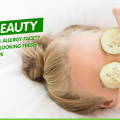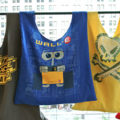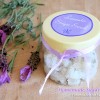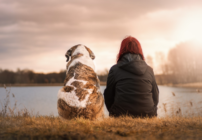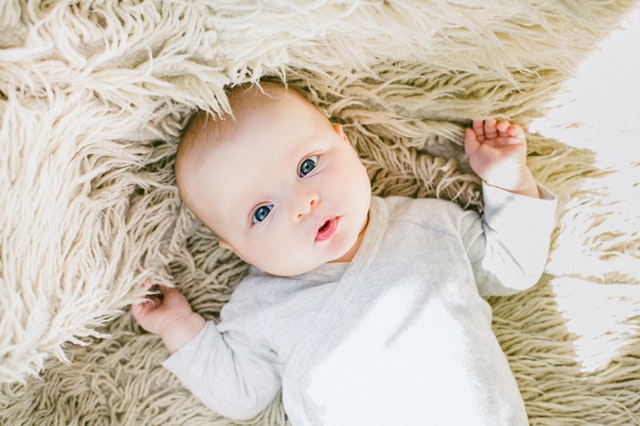
Image Credit: Pexels, Free to Use Licence.
Heat rash is often associated with the warmer summer months, when your baby may be exposed to high temperatures and humid conditions, but did you know that heat rash is in fact just as common throughout the winter months? We’ll explore why this is the case and what you can do about it later in this post.
What is a heat rash?
Heat rash, also known as Miliaria or a sweat rash, is a common ailment of the skin and presents itself when the skin is exposed to hot and humid conditions. Under hot and humid conditions sweat and moisture is trapped close to the skin and can clog the sweat glands, this causes irritation and presents itself as an itchy, red rash.
What are the symptoms of heat rash?
The symptoms of heat rash are the same in both adults, children and babies if you suspect your baby has heat rash then look out for;
A rash made up of small red spots
Clusters of small fluid-filled blisters
Your baby feeling restless and itchy
Redness and occasionally mild swelling of your babies skin
These symptoms can occur anywhere on your babies body but most often occur under the arms and in the creases of the skin on the neck, back and upper abdomen as these are the places where your baby is most likely to get hot and sweaty. Heat rash can also sometimes spread to other areas and may look as though it comes and goes over a period of a few hours.
What causes heat rash in the winter?
Heat rash can occur at any time when the skin is subjected to hot and humid conditions – this means that heat rash isn’t limited to the summer months. In the winter our heating is often cranked up high and our babies are often heavily clothed in blankets, hats, gloves and many layers of clothing, this can lead to excessive sweating and with so many layers, often comprising of material that doesn’t allow the skin to breathe, this sweat is unable to escape and is trapped close to your babies skin. When the skin is moist and warm under layers of clothing your baby may develop a heat rash.
Are heat rashes dangerous?
A heat rash may be uncomfortable for your baby but thankfully they are usually completely harmless. However, complications can sometimes occur if your baby is allowed to scratch their heat rash, as this may lead to other skin infections that may be harder to treat. Heat rashes are also a sign that your baby is excessively sweating and so should be used as a warning that they may be getting too hot. If the heat rash doesn’t resolve itself in 3-4 days or is accompanied by other symptoms such as a fever, then it’s time to consult a doctor to make sure that it is nothing more serious. If in doubt, get it checked out.
How to treat a heat rash
Thankfully, most heat rashes will usually resolve themselves, however, there are a few things you can do to help the healing process and to make your baby feel more comfortable as they do so.Apply something cool to your babies skin
Apply something cool to the skin such as a cold wet flannel or an ice pack wrapped in a towel, but for no more than 20 minutes at a time.Give your baby a cooling bath
Give your baby a bath in bathwater that is a little cooler than usual, the cool water will soothe prickly heat on the skin and help to wash away any sweat which may lead to further irritation.Apply soothing balms to the affected area
Avoid applying anything that can irritate the rash such as perfumed creams, instead stick to more natural soothing remedies such as aloe vera gel or calamine lotion.Use over the counter medicated ointment
If natural remedies aren’t doing the trick then there are over the counter medical ointments that can be prescribed to help alleviate inflammation and itching.Distract your baby from scratching
Try to stop your baby from scratching their heat rash by keeping them entertained. You may also wish to dress them in a loosely fitted outfit which will allow the skin to breathe whilst providing some protection against sharp fingernails.Keep your babies nails short
Some scratching will be inevitable, but you can limit the damage done by ensuring your baby’s nails are cut nice and short.Allow your babies skin to breath
Use lightweight, cotton bedding to allow your babies skin to breathe at night and dress them in loose fitted clothing.Keep your baby well hydrated
Although your baby should be well hydrated at all times, it’s especially important to ensure they remain hydrated whilst their skin heals.
How can you stop heat rashes in the winter?
Although heat rashes a very common problem and one that will often resolve itself, that doesn’t mean it’s not worth learning how to prevent your baby from getting heat rash in the first place. Thankfully heat rashes can be very easy to avoid by simply doing the following:Be aware of sudden rises in temperature
Babies tend to get hot much more quickly than adults and are unable to undress themselves if they feel themselves getting too warm. Try to keep your baby cool by paying close attention to conditions that may cause a sudden rise in their temperature such as when you come in from the outside. If your baby is fussing or has hot red cheeks then this may be a sign that they are too hot and need a layer of their clothing removing.Dress your baby in layers
Dressing your baby in easy to remove layers makes it easy to ensure that they stay a nice consistent temperature. Try to find layers that are breathable too so that they wick away any sweat that does occur.Dress your baby in breathable cotton materials.
Try to ensure that your baby is dressed in a nice breathable material such as cotton, especially the layer that is closest to their skin. This will help to keep moisture at bay and will help to stop any irritation.Give your baby some time out of their nappies
Heat rash often occurs around the creases of the legs in babies who wear nappies for long periods of time. Try to give your baby some time out of their nappies each day to allow their delicate skin in this area to breathe, and dry.Cool your baby down if they get too hot
If you notice that your baby has gotten hot and sweaty then cool them down gently in a cool bath. The cooler water will wash away any sweat build up on their skin to avoid their pores being blocked which can lead to a sweat rash. If you’re out and about then apply a cool washcloth to your babies skin to help them cool down.Keep your babies skin dry
Too much moisture can irritate your babies skin. Ensure your baby is well and truly dry after bath time, even between the creases of their arms, legs and neck.Don’t apply a heavy moisturiser
Moisturising your babies skin is important but creams that are too thick and heavy may not absorb and can sit on top of the skin, trapping in sweat. Try to find a lightweight moisturiser and rub away and cream that builds up in your babies skin crevices or doesn’t fully absorb.
Related Posts
- 7 Common Baby Health Issues And How To Treat Them
As a new parent, it can be worth knowing about some of the common health…
- 8 Ways to Prepare Your Home for The Upcoming Winter Months
It's wintertime, and for many of us, that means snowstorms are in the forecast. This…
- Plan for a better Winter Next Time
We’re well into 2017 now, and soon enough all this snow and ice will start…

